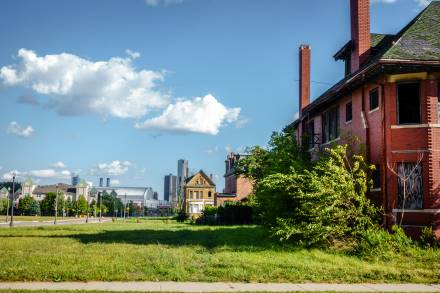How Detroit Went from the “Arsenal of Democracy” to an Empty City
Second in a six-part series
In the early 20th Century, Detroit found itself becoming an economic powerhouse when Henry Ford and the Ford Motor Company began mass producing Model T’s in the 1910s. In turn, this boom in productivity was matched by a boom in the supply of labor, as millions of African-Americans left the Jim Crow South’s system of legalized racial segregation to inhabit the booming industrial hubs of the North. This movement, known as the Great Migration, greatly benefited the city, and by 1920 Detroit was the 4th most populated city in the nation (NBC News, 2018). The city’s African-American population would continue growing exponentially, doubling in size from 1940-1950 alone.
However, because this vast expansion of the population was powered predominantly by people of color, racial backlash ensued. Despite strong job opportunities for African-Americans in Detroit relative to what was available in the Jim Crow South, black residents were still prevented from being promoted up corporate hierarchies due to sheer racism (Feeley, 2014). Meanwhile, racist redlining policies implemented by banks and largely unchallenged by government prevented African-Americans from getting the low-interest mortgages on suburban homes they needed to move out of the city and gain the quintessential symbol of American class mobility. This discrimination effectively ghettoized black Detroiters, preventing them from reaping the benefits of new highways leading out of the city and major automobile factories being built in the suburbs; thus, many were left economically marginalized, a fact that played a huge role in contributing to the city’s infamous riots of 1967 (Clifford, 2017).
Around the same time as racial tensions were at their peak in Detroit, it’s “Big Three” car companies – Ford, General Motors, and Chrysler – finally began facing serious competition as nations such as Japan that had been ravaged by the second world war began to return to industrial preeminence. By the time the 1980s came around, whites had largely abandoned the city for suburban homes and a greater availability of jobs, with 310,000 escaping for the suburbs between 1970 and 1980 alone (Thompson, 1999). This mass migration led Detroit to lose a significant portion of its tax base in the span of just two or three decades, not to mention the professionals who had filled crucial roles in the city’s economy up to that point. This abrupt demographic change paired with the recession and wage stagnation endured throughout much of the 1970s produced a dire situation for Detroit’s budget, and more importantly, its residents (Thompson, 1999). As the city lost more and more revenue, its social services deteriorated, creating a snowball effect of economic marginalization that left the city on a path to bankruptcy and its majority African-American population burdened by some of the nation’s highest rates of poverty (Mack, 2019).
Several decades later, when the collapse of the U.S. housing market produced the “Great Recession” of 2008, bank failures throughout the country left people – especially those without significant collateral – unable to get loans and therefore unable to purchase vehicles (NBC News, 2018). Almost immediately after the recession began, the auto industry also came within striking distance of total collapse, decimating what remained of already meager job prospects for residents of inner-city Detroit within a short period of time. While unemployment in America was calculated at 9.8% during this time, real unemployment (which includes those who have given up on searching for employment) was 17% and as high as 29% in Detroit (Harris, 2009). According to The Guardian in 2009, even as Wall Street began to celebrate recovery, “There is little doubt that Detroit is ground zero for the parts of America that are still suffering” (Harris, 2009).
In 2013, with a municipal debt of more than $300 million and climbing, Detroit became the largest city in American history to declare bankruptcy. This decade, especially in the years since the declaration, has seen a crisis of housing dispossession take root, fueled by factors such as tax foreclosure, urban renewal, eminent domain, land speculation, and unjust property taxes (Mondry 2020). In the installments to come, I will undertake an in-depth analysis of the role each of these phenomena – embedded in this racialized history of the city’s decline – play in (re)producing the cycle of dispossession in Detroit.



